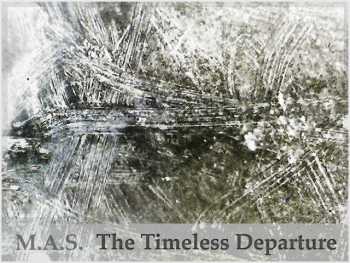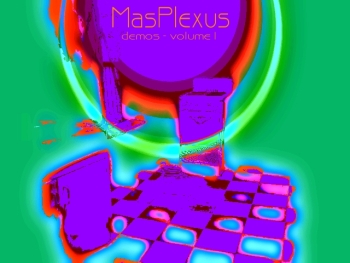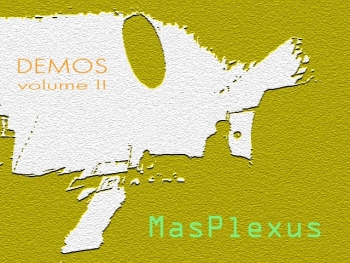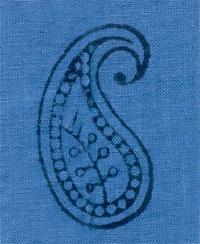Those who have embarked on a spiritual path may or may not recognize specific individuals who have helped them jump start their inner adventure. My early spirituality was not at all influenced by Eastern philosophy or New Age writings, at least not directly. Instead, it was solidly rooted in the realm of modern art, music, and literature, with the idea firmly planted within me from a young age that I will be climbing up "the other side of the mountain."
My first spiritual guru was not a figure like Krishnamurti or the Buddha; it was Franz Kafka. He was what I would call one of the godfathers of enigma craftsmanship. Some of my earliest and most memorable altered states of consciousness came as a result of dream-wading my way through the mystery corridors of his writing. The enigmas he presented, coupled with the sense of purity and human warmth in his writing - or perhaps just his highlighting the beautiful and mysterious aspects of being human and accentuating them to the nth degree - opened doors that eventually led me down the path towards my mystical experiences.
Since Kafka's time, there have been quite a number of artists of many mediums that focused on the enigmatic side of creativity. Names such as Harold Pinter, David Lynch, the Brothers Quay, and Francis Bacon are but a few. One can argue that they've gone to far greater lengths than Kafka in this regard. And yet, as is usually the case, the early pioneers of a specific style or genre tend to breathe an unusually strong sense of life into it, with a purity that remains memorable and worthy of exploration throughout many generations.
To be profoundly moved by a mystery which can neither be explained nor scrutinized by the intellect, this is the proper form of an enigma. Some enigmas point to insights which lie just beyond the horizon of conscious understanding, and poetics can also come in such a form. Yet, the true enigma stubbornly shies away from conscious analysis while retaining its intense sense of profundity. One can circle about it with ideas, but to plumb and articulate its depths is not possible. One is moved, deeply moved, yet without knowing exactly why.
What does enigma have to do with spiritual awakening? It kindles the spirit to life with wonder. A powerful enigma is a slingshot into the Unknowable. There, with our eyes closed and our hearts fully observant, we behold the touch of infinity. Beckoned by awe and wonder, the yearning to grow and evolve unfolds. We return to our daily lives feeling enriched, albeit in a vague way, having briefly visited with the mystic inside of us.
The Art of Enigma Craftsmanship
Kafka's writing, in its more magical moments, typically held a certain level of fidelity to poetic obscurity, so that the intellect had nothing to which it could cling too strongly when it came to the enigmatic parts of the story. The conscious, analyzing self is put to rest to a large degree and mysteries are crafted into being with a sense of unapproachable purity. Today, nearly a century after his death, one commonly finds a written summary of his work which states that much of his writing was open to endless interpretation. From my perspective, this is the essential mark of Kafka's genius; that his tales forever escape the slice and dice and the compartmentalization of logic.
In a similar manner to how the intellect can only circle around an enigma and can never penetrate its depths, the main character in the Castle, in his endless attempts to approach the castle in the middle of the city, finds the act to be ever more difficult. Likewise, K. in The Trial can never get to the heart of the Law in order to resolve his case, whose details are never explained. Both books mirror the reader's own inability to find a concrete interpretation of the mysteries they present. While it seems like metaphors are at play, so that whatever seems out of the ordinary becomes a beckoning riddle, and while at times it feels like the deepest wisdom is being communicated, one can at most describe the tales as dream-like and any further interpretation usually comes with the feeling of having explained too much.1
In a letter from Kafka to the publisher of Metamorphosis, the story of a man whose body had transformed into that of a giant insect, he wrote about his concerns over the book's cover: "the insect itself is not to be drawn. It is not even to be seen from a distance." Why? Such a statement suggests his concern over retaining a handle on what is to be rendered concrete and what is to remain obscure and ambiguous.
If one compares the art of writing fiction with the art of making a film, one of the essential differences is that a writer has the advantageous ability to describe, and thus render concrete, only those details which s/he finds necessary to communicate, leaving the rest up to the reader's imagination. A film, on the other hand, typically has little choice but to present a character or a scene in its entirety. As soon as a character's face is shown on the screen, the ears, the mouth, the eyes, the nose, the cheekbones, the hair, all is presented at once. In writing a story, the writer begins with a blank slate, the world is a mystery, and every word is carefully chosen to gradually construct the scene. In this manner, much of the elements of the story are held ambiguated until they are described, if they are described at all.
In crafting an enigma through writing, this negative space is purposefully utilized to keep that part of the story which is mysterious vague and undefined, as much as it needs to be for the enigma to be presented with full force and for the subtleties to come forth unclouded by unnecessary distractions that the intellect is bound to latch onto.
There is a balancing act between defining too much and keeping too much obscure, and this balance is superbly demonstrated in Kafka's writing. While obscurity is useful to keep the intellect at rest and encourages an enigma to be appreciated in the intuitive realms, the true master of enigma does not purposefully obfuscate her/his ideas just to be obscure. This would violate the laws of reason. Obscurity without meaning creates confusion and is relatively fruitless. There is no reason for enigma to contradict the natural order of conscious thought; reason and enigma can live harmoniously in parallel. In this area Kafka shone, for his writing would always tread that fine line between falling over the edge of obscurity and retaining the purity of the enigmatic aspects of his stories.
Being aware of this fine line is not easy and what makes it even more difficult is the varying reactions different people have towards the type of mystery which is unapproachable. Several people who have watched David Lynch's Mulholland Drive, for example, told me that they felt Lynch was simply messing with their heads in the final (dreamy) section of the movie. I personally do not agree, but this highlights the potential downsides of presenting an enigma to an audience. The intellect, as soon as it distrusts a work's integrity with respect to meaning and worth, works overtime to demystify the enigma being presented rather than letting go and appreciating the enigma in the intuitive realms.2
Similarly, many have brushed away Kafka's books because they were "too difficult to read" and, again, this is because the intellect wants to make things concrete and to get to the bottom of the mystery, when in reality the value of Kafka's work is that it expresses the "unfathomable depths", as Kafka himself once described portions of his writings (found in "The Stoker").3
Intersection Point - Enigma in the Creative Arts and Koans in Zen
A koan is a concentration device used by students of Zen Buddhism which typically comes in the form of a story, question, or statement that defies or perplexes rational understanding. Koans are meant to be concentrated upon for long periods of time and they can sometimes be understood through intuition. Concentrating on a koan can lead one to an awakening or a state of enlightenment. According to D.T. Suzuki, "the idea is to unfold the Zen psychology in the mind of the uninitiated, and to reproduce that state of consciousness of which the statements are an expression."
An example of a koan that defies logic: "What is the sound of one hand clapping?" Other examples can be enigmatic, such as "Not thinking of good, not thinking of evil - tell me, what was your original face before your mother and father were born?"
James H. Austin is a neuro-scientist who wrote a book titled "Zen and the Brain". He describes his experiences in Kyoto, Japan, in Zen meditation and his interactions with a roshi, a Zen master. He was given a koan to ponder by the roshi and after a number of months when he had to leave Japan, he confessed his disappointment in his lack of progress. The roshi replied: "Stay with the koan itself. Break down through the where of the koan, and it will open up."
He illustrates. He points down and in, extending both arms into a long V. But at the bottom, he leaves a gap of three inches or so between the tips of his outstretched fingers on both sides. "A deep valley of the mind will open up like this," he explains. "Once you've gone through one of the experiences, a valley is cut in the mind, and it will stay open. Go into that opening...Keep on going like a train in a tunnel, and you will finally reach the daylight at the other end."
In earlier posts, including "Black Holes and the Art of Transformation", I discussed how the letter "X" can be interpreted as a symbol of transformation. I first became interested in exploring this symbol when I started hallucinating it on a regular basis whenever I closed my eyes beginning around a decade ago. By that time, my life was centered largely upon the mechanics of reaching higher states of mind and the object of the game seemed to revolve around going up through the center of the "X", from the bottom middle part through the tiny center and out the top. When I read Austin's book, I was startled at how similar was the roshi's description of coming to an understanding of the koan as going into a valley of the mind in the shape of a V and reaching enlightenment on the other side.
How does this valley of the mind come into being? Through meditation, one can clear the clutter of conscious thought so that there is no ripple in the pond of consciousness. The stillness spells regularization and concentrating upon a single point of focus causes a regularized bending of the mind towards that point of singularity just as a black hole warps the space-time around it inviting all neighboring objects to get pulled in.
With respect to working with a koan, the combination of concentrating on a koan and the baffling of conscious thought into a meditative quietude due to the koan's contradictory nature produces a single-pointed state of mind with a high degree of regularization. In this manner, transformation occurs; as a valley of the mind opens up, it is my theory that the movement in consciousness through this tunnel becomes at some point automatic, just as how the warping of space-time around a black hole generates the gravity effect that pulls all objects into its center. (There are many parallels between the nature of space-time and the way consciousness moves over time (see earlier posts) and this is but one of them.)
Similar to the act of probing a koan, an audience appreciating an enigmatic work of art or literature opens up a valley in the mind. The profundity of an enigma produces a yearning to understand the mystery behind it and this serves to accentuate one's purity of concentration. The impossibility of conscious understanding, outweighed by the intrigue and the yearning to understand, stills the intellect, especially if the rest of the work surrounding the enigma is kept vague in poetic obscurity. One's state of mind becomes empty of the intellect's distracting thoughts just as during meditation. A regularized bending of the mind towards the enigma produces movement in consciousness through what I like to call the "Enigma Chute". If the intensity of the transformation experience is high, one finds oneself in the mystery-realm of the Unknowable, the world alive and full of wonder.
Addendum - Kafka Koans
While there is no evidence that Kafka studied Zen, he has some quotes which possess a remarkable level of similarity with koans. I am currently in the middle of writing another post that explores this topic, in addition to his relationship with the Coincidentia Oppositorum found in the Kabbalah. In the meantime, here are some examples of "Kafka koans":
"My life is a hesitation before birth."
"The history of mankind is the instant between two strides taken by a traveler."
"The Messiah will not come until he is no longer necessary; he will not come until one day after his arrival"
"It is comforting to reflect that the disproportion of things in the world seems to be only arithmetical."
-----------------------------------------------------------------------
1. Of all the essays on this blog, this one has been the most difficult to write. I have been working on this essay for over a month now and the closer I got to (understanding) Kafka, the more difficult it was to write about his work from an intellectual perspective. I was tempted time and time again to stop trying, for the fiction writer in me had surfaced instead. Indeed, the only way one can write about Kafka and do his work justice is through fiction, just as some of the best documented responses to koans themselves defy reason. "Logic Dies, I am Sorry" is a story I wrote as a result of laboring on this essay, and it initially surfaced in my mind as some kind of sequel to "The Castle", where the Distinguished Gentleman is an heir of the land surveyor position, only he is depicted as a lecturer instead. The "sphere of noise" in the story threatens to destroy the ideas in this very essay and as I type these very words now I feel my inner being in a state of revolt. As Kafka himself once said: "No more psychology!"
2. I find it unfortunate that while David Lynch has proven to be remarkably talented and influential in depicting dream-like and unapproachably enigmatic states on film, his use of fear and other related elements of negative orientation render the effects of his film rather weak when it comes to positive spiritual transformations in the audience. His talent, as he has especially proven in "Inland Empire" is quite remarkable and were he to devote his work more to the light instead of the darkness, he will most likely introduce the experience of enlightenment to many of his viewers, and thus he holds a great potential power in his hands. As it stands, the mystical experience simply does not jive with the dark side, except perhaps for those whose evolution has taken them very far in the negatively oriented direction. Same goes for Francis Bacon before him.
3. Interesting stories of Kafka that demonstrate enigma craftsmanship include "Before the Law", "The Knock at the Manor Gate", "The Cell", "The Spring", and the last chapter of "The Trial", amongst many others, including Kafka's diaries, which can be quite exceptional.
Sunday, June 1, 2008
Kafka, Enigma, and Mysticism
Labels:
brothers quay,
david lynch,
enigma,
enlightenment,
harold pinter,
kafka,
koans,
mystery,
tranformation,
zen
























2 comments:
I was under the impression that people who avoid Kafka do so because his writing (aside from maybe the fables?) is saddening and rather spare/lonely/depressive, not because it's difficult to read or get a handle on. I think I've rarely felt less connected to people (who aren't the protagonist) than when I was reading Kafka. I'm surprised to see you wishing Lynch and Bacon left people with more positive feelings when Kafka seems to be so much about the impossibility of anything working out. This opinion may be a function of personal temperament (i.e. bipolar, currently dysthymic), but surely a koan that expresses despair only achieves its fullest expression if it engenders wonder and terrible despair simultaneously. As for Kafka, while I understand that there's comedy there, I haven't read anything that seems to me to point to anything beyond that despair.
I am glad you made this point because it seems true that a good number of people find Kafka's writing disturbing. These matters are quire subjective. I certainly wouldn't claim that his work lacks negativity, but I personally find the negative elements in Kafka's writing rather benign, perhaps because they seem to depict familiar struggles of a spiritual nature, which somehow blunts the negativity, or I simply resonate with the positive aspects of his writing to the point that they outshine the negative ones.
For me, an example of despair that achieves its fullest expression is that of the mother character in the movie Requiem for a Dream, if you are familiar with it, whose struggles deal with emptiness, almost the lack of soul, and the impossibility of achieving rather petty aspirations like going on television and impressing her friends, etc. The impossibility in Kafka's stories seem born out of a sensitivity to archetypal patterns and core human experiences, in line with dealing with the Unfathomable or Unknowable, which one is likely to come across on the spiritual path, where much is shrouded in mystery.
Perhaps the more important point to make is that I find the negative feelings evoked by his work to belong (generally speaking) to the same category as poetic melancholy. While they can be depressing, they are melodic, so to speak, capable of being transmuted to higher, more refined energy (when combined with the wonder induced by enigma, for example); they possess the possibility of sublimation. In contrast, horror, fear, tension, violence, and the accentuated hatred behind violence such as found in some of the works of Lynch and Bacon are chaos-inducing. These are randomizing energies that lower one's vibration and deter the elevation of one's state of mind (although it is possible they trigger elevation in indirect ways).
Post a Comment